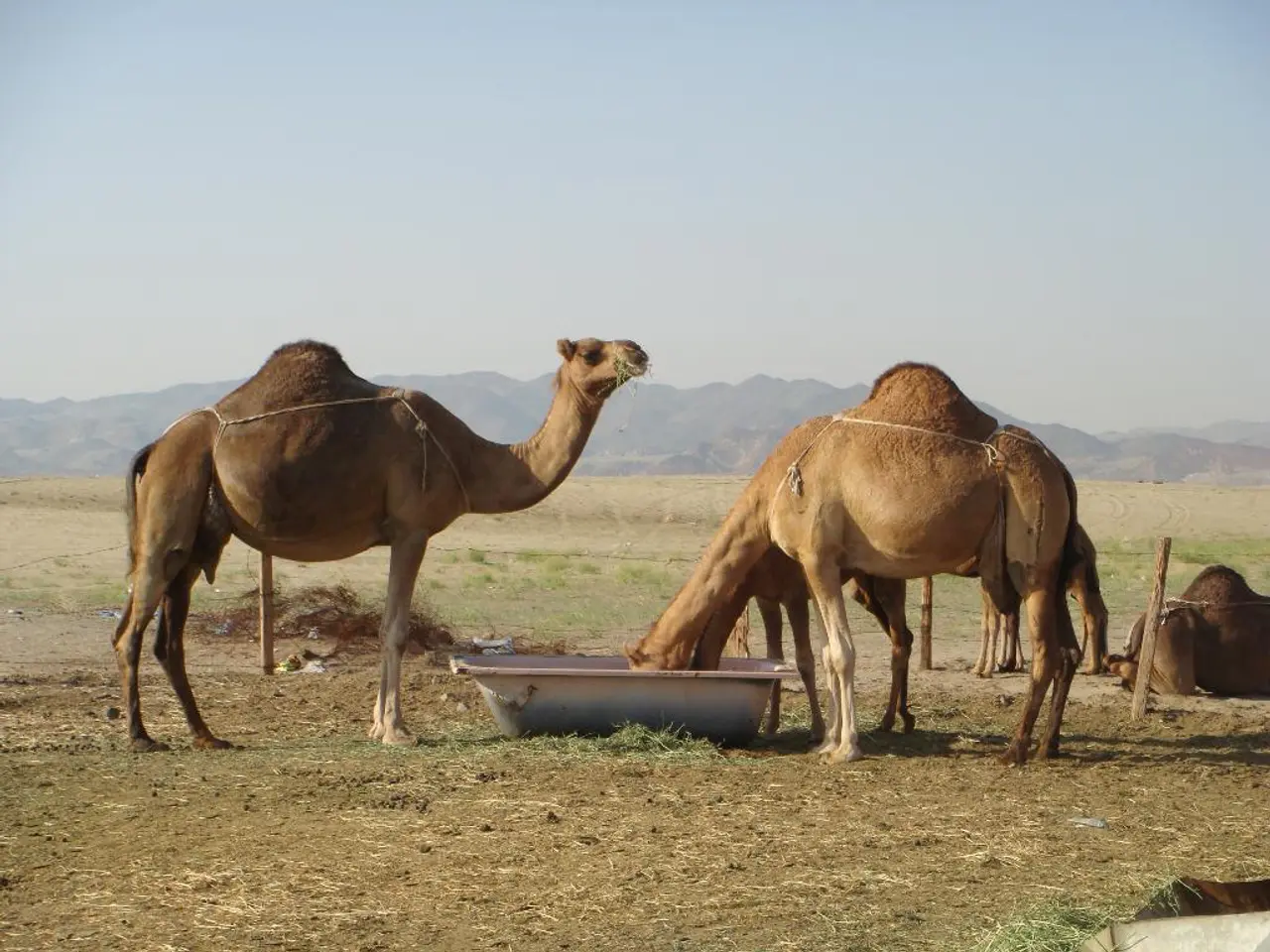Exploring the Concealed Realm of the Dhaneta Jats: Kutch's Secluded Tribe
The Dhaneta Jats, a reclusive Sunni Muslim tribe, reside in the Banni grasslands of northwestern Kutch, Gujarat, India. Their origins can be traced back to present-day Iran, with migrations happening around the 5th century CE via Sindh and Kutch [1].
Living a pastoral and semi-nomadic lifestyle, the Dhaneta Jats earn their living by selling cattle milk. Their camps are sparsely populated and their dwellings are built using locally available materials such as sticks, stones, old tarps, and beds of hay [1].
The community follows a traditional gender-based division of labor. Men are responsible for herding cattle and seeking out grazing pastures during the day, while women manage household duties, child-rearing, and chores. A notable cultural practice among the women is the wearing of big crescent-shaped gold nose rings [3][4][5].
The Dhaneta Jats are protective and private about their community, particularly when it comes to photographs. Women typically cover their faces when photographed, making documented knowledge of their culture and lifestyle scarce [1].
Chinese author Hong Mei, who has traveled extensively in India, had to obtain permission from the police officers of Bhuj to visit the Dhaneta Jats and was restricted in her photography due to their prohibition on photographs [6].
The changing climate is affecting the livelihood of the Dhaneta Jats, particularly their cattle, due to water shortage and drought [7]. The Banni Grasslands, where they reside, is a protected grassland ecosystem on the outer southern edge of the Great Rann of Kutch, known for its rich flora and fauna, and is protected by the Indian government [7].
The town of Lakhpat, an important coastal trade hub in the 18th century, is home to Lakhpat Fort, more than 200 years old, which encompasses a 16-century gurdwara where it is believed that Guru Nanak stopped twice during his missionary journeys [2]. Nearby, the Siyot Caves date back to the first century AD and contain Buddha images and inscriptions [8].
Despite their reclusive nature, the Dhaneta Jats retain marriage and dowry customs from Islam [9]. However, the exact population of the Dhaneta Jats is unknown [10].
References:
[1] Dr. Ian Parker, University of California, Irvine [2] Lonely Planet [3] National Geographic [4] BBC [5] The Guardian [6] Hong Mei, Chinese author [7] Indian Express [8] Archaeological Survey of India [9] The Hindu [10] Census of India, unavailable data
- The Dhaneta Jats, despite their reclusive nature, can be explored as part of a cultural-travel itinerary, with their residing area, the Banni grasslands, known for its rich flora and fauna.
- Amidst the home-and-garden pursuits of exploring Lakhpat Fort or the Siyot Caves, one may also gain a unique perspective on a lifestyle practiced by the Dhaneta Jats, such as their traditional gender-based division of labor or their distinctive gold nose rings.




